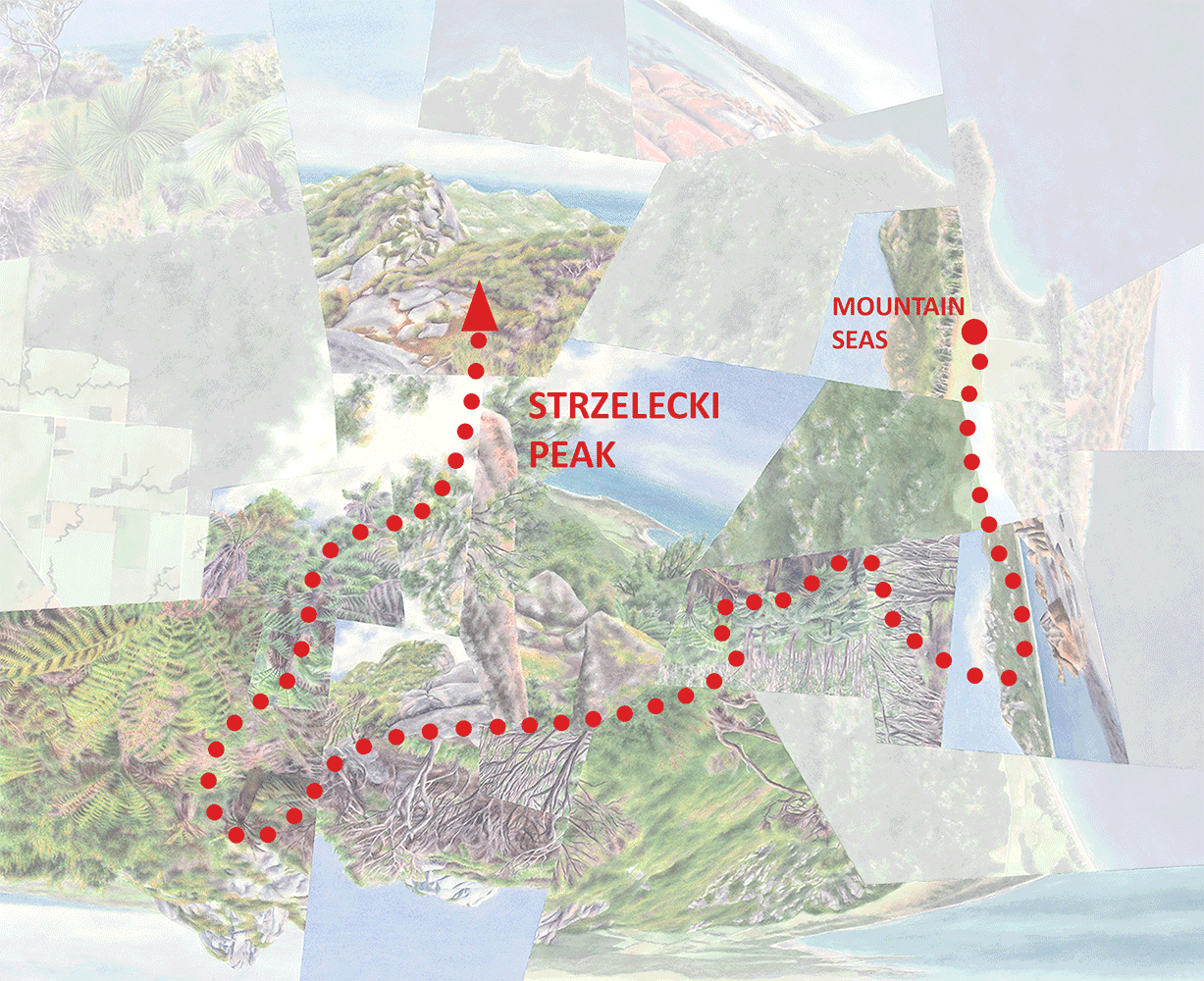Botanic Park, like Bluff (subject of my last post), is inspired by the botanical richness and uniqueness of the southwest Australian “biodiversity hotspot.” Specifically this work is based on Mt. Martin Botanic Park within Gull Rock National Park, just east of Albany. While both works are fragmented in my standard way, vegetation in the traditional scenic sense plays a more prominent role than usual relative to my typical cartographic focus on edges, contrasts, and sequences. Below you’ll see more of why that is.
Botanic Park, watercolor on aquabord, 18”x24.” I haven’t animated my “journey” through this one because it’s a sense of “smallness” that I’ve tried to emphasize rather than distance or extent. (Plus the hike itself wasn’t very linear.)
Having said that though, Botanic Park does emphasize geographical edges more than Bluff—specifically the coastline and the city-nature contrast. (The latter is an accentuation, since the suburb of Albany across the water is actually smaller and less dense than what you see. To heighten the contrast I’ve relocated the downtown, a bit farther away, to that spot.) Those geographical edges, along with the site’s small area and gentle topography compared to the monumentality of Bluff Knoll, gives it a particular aura of delicacy and fragility—a sense of being “on the edge”—on top of the biological preciousness and precariousness of the region as a whole. My overall fragmentation/compression of the park’s area, and the work’s relatively small dimensions compared to most of my other recent ones, are meant to underscore that feeling.
That sense of smallness and delicacy has do with more than just geographical scale. I mentioned last time how smitten I was with some of the plant species in this area; at the top of the list would be Kingia australis, found only in this region and the only species in its genus. I found these plants to be comically endearing (do I even need to mention The Muppets?); they seemed to be having fun, as if enjoying the attention I was giving them for being so special but also blissfully and innocently ignorant of the vulnerability that comes with that status. (Yes, I do often anthropomorphize plants. It’s usually when they have a tuft of leaves at the top of a single stem—probably part of the reason I’m so attracted to palm trees. Oaks, in contrast, I don’t think have much of a personality.)
I briefly used this as my Facebook profile pic.
This one makes me think of a little kid who’s bad at hide-and-seek.
The usual suspects.
Mt. Martin does have other noteworthy plants, including the region’s most significant remaining stands of the scarlet banksia.
A grass tree (Xanthorrhea sp.)—as I wrote last time, it’s actually not closely related to Kingia. This was my favorite Australian plant until I discovered the latter. Kingia tends to have a much “daintier” look.
Looking down the coastline of the National Park, with a few Kingia poking out of the canopy on the right.
So I’ll end this post on a more lighthearted note than I did the previous one (i.e. with no mention of bushfires).
Next time, to the other side of the country….
Darren























